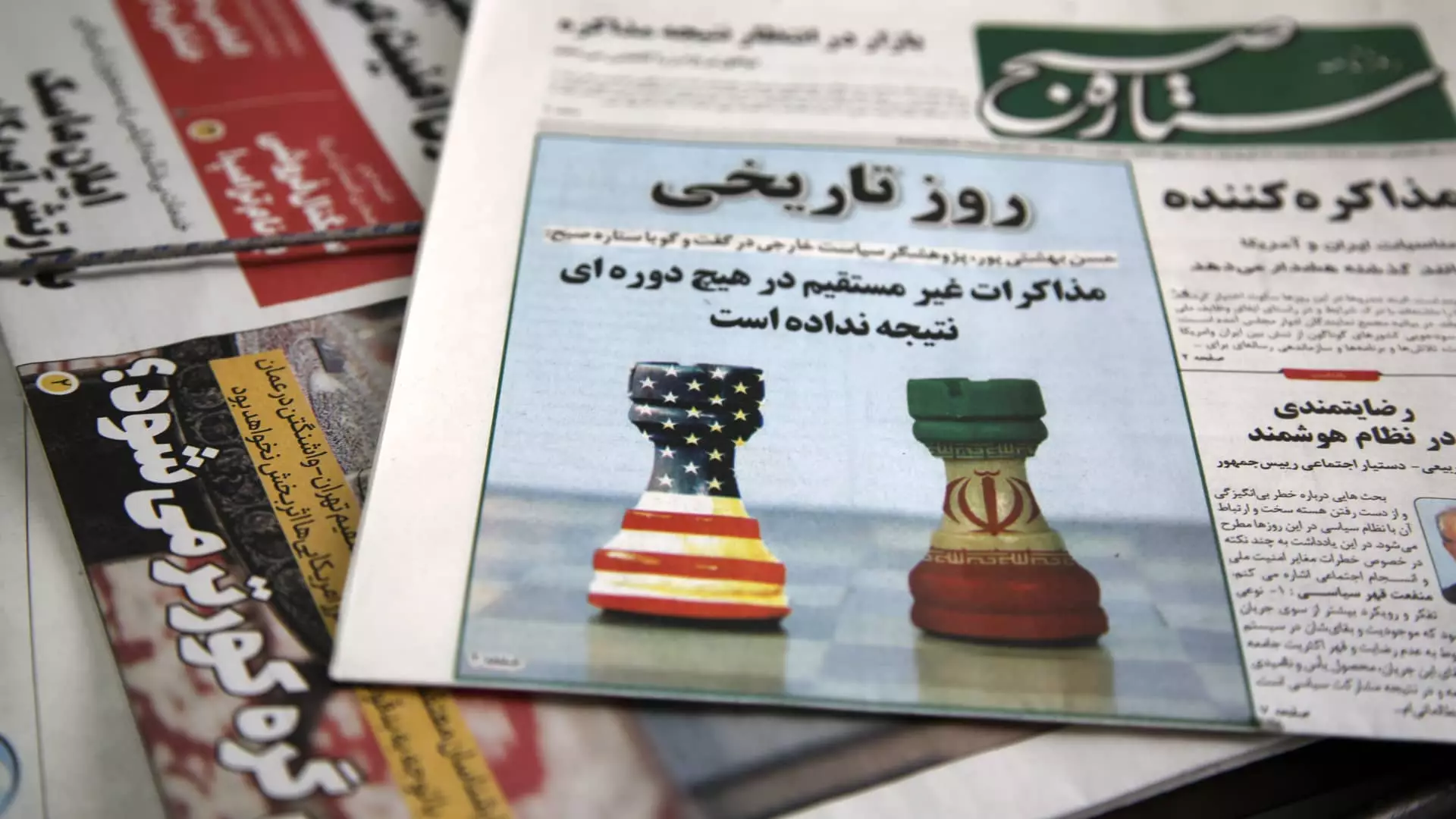The upcoming round of nuclear negotiations between Iran and the United States reflects a bizarre and frustrating paradox in international politics. Hailing from two vastly different places on the political spectrum, these nations embark on discussions that could reshape not only their futures but also those of countless other countries. The backdrop to these talks, set against President Donald Trump’s aggressive rhetoric and insistence on military preparedness, only intensifies the stakes. This combustible mixture of diplomacy and military threats underlines how precarious the road towards a potential agreement can be.
The complexity of the situation is exemplified by the contrasting atmospheres created by Iranian and American officials. While Iranian Foreign Minister Abbas Araqchi expresses a sense of caution, stemming from his country’s long history of mistrust, Trump exudes a confrontational tone, reiterating his hardline stance against Iranian nuclear ambitions. The uncertainty looms large as tensions rise, and the prospect of a definitive resolution appears blurred by conflicting expectations. It is imperative to ask whether diplomacy can truly work when both parties come to the table with such divergent worldviews.
The Asymmetry of Trust
Fundamentally, the crux of this negotiation lies in trust—or the glaring absence of it. Iran’s Supreme Leader, Ayatollah Ali Khamenei, claims to adopt an ambivalent outlook, navigating between optimism and skepticism; this duality highlights the precarious nature of Iranian trust in the U.S. administration. Following Trump’s withdrawal from the 2015 nuclear pact, the integrity of any potential agreements has been called into question. With American sanctions crippling Iran’s economy, the onus remains on the U.S. to provide reassurances that it will not renege on its promises yet again.
For Iran, mere words do not suffice; they need tangible, concrete guarantees. The policy of “maximum pressure” from the U.S. breeds palpable anxiety among Iranian decision-makers, fostering a climate of non-cooperation. The concern is not simply about enriching uranium or military capabilities but about the sanctity of national sovereignty and the potential for economic ruin that arises from misplaced trust.
The Enrichment Dilemma and the Path Forward
Adding another layer to this geopolitical quagmire is the predicament surrounding uranium enrichment. Iran has consistently underscored that it seeks peaceful nuclear advancement but has surpassed the limits outlined in the 2015 pact. For the United States, halting this enrichment process is non-negotiable if any meaningful agreement is to materialize. The Iranian regime, however, will not be swayed from its stance to maintain its enrichment capabilities. The issue is not merely a technical one but deeply intertwined with national pride and historical grievances, marking a chasm far too significant to overlook.
The stark reality is that this negotiation reflects a larger ideological battle in which a balance must be struck between deterrents and diplomatic engagement. Achieving a framework that acknowledges Iran’s right to develop a nuclear program for peaceful purposes, while simultaneously ensuring U.S. security concerns are appeased, poses a considerable challenge. Yet, the alternative to a successful negotiation—an escalated arms race or, heaven forbid, outright conflict—carries dire implications for both nations and the world at large.
The Role of Mediation and International Dynamics
Interestingly, while Oman emerges as a mediator to facilitate indirect talks, the role of external players like Russia adds another layer of complexity. Russia, being a signatory to the original nuclear agreement, offers a glimmer of hope for constructive mediation. Yet, their involvement could also lead to geopolitical juggling, complicating already strained dynamics. The ongoing tussle between the United States and its traditional allies versus emerging powers presents a challenging backdrop against which these negotiations unfold.
The challenge lies in harmonizing these external influences while maintaining focus on the central dialogue between Iran and the U.S. A multi-branched approach is essential, emphasizing that diplomatic success requires both bilateral commitment and the engagement of interested parties. The path toward resolution will not come easy but demands a concerted, genuine effort devoid of ulterior motives.
This nuclear discourse represents not merely a standoff between two nations; it reflects a vital test of diplomacy on a global stage. One that, if navigated poorly, could spiral into catastrophic repercussions. The urgent need for pragmatic solutions cannot overshadow the profound implications such negotiations carry for international relations, national security, and the future of diplomacy itself.

